Old Engineering Celebrates 101 Years
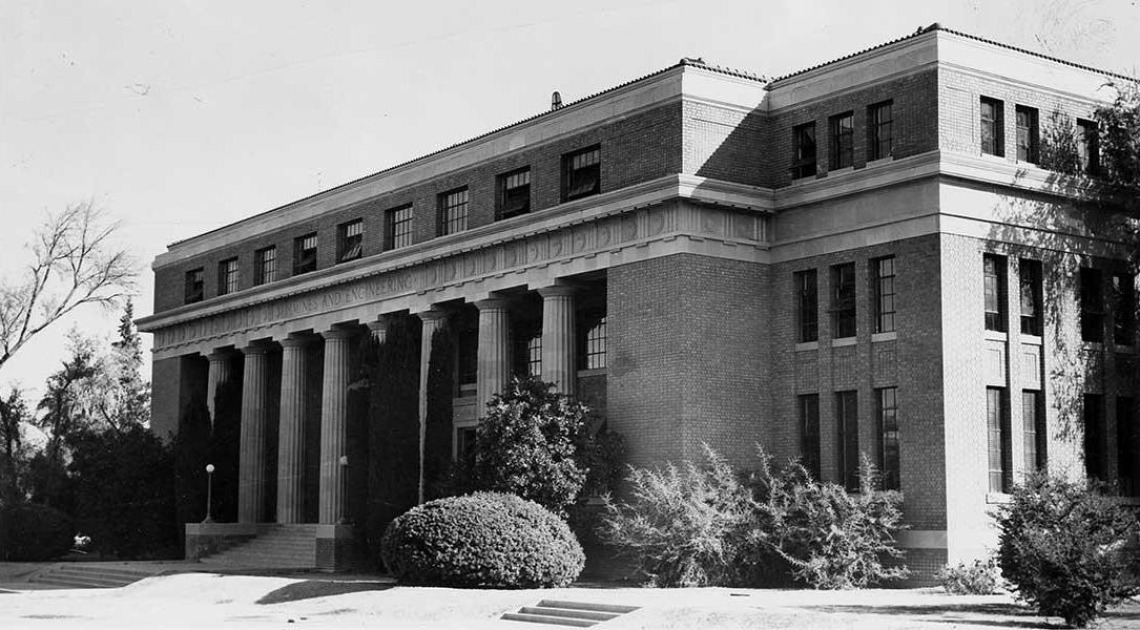
Old Engineering in 1956. (Courtesy of UA Special Collections)
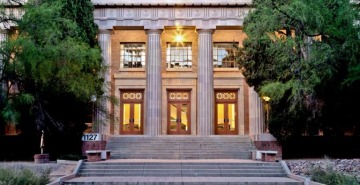
Old Engineering was among the UA buildings entered into the the National Register of Historic Places in 1986.
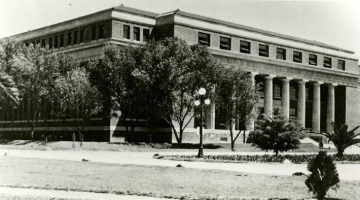
Old Engineering, circa 1919. (Courtesy of UA Special Collections)
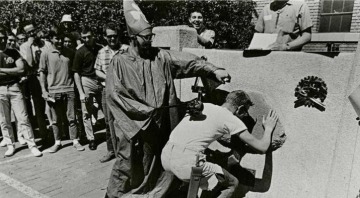
St. Patrick's Day was quite the affair in the early days of the College of Engineering. St. Patrick, famously known as the patron saint of Ireland, is also the patron saint of engineers. (Courtesy of UA Special Collections)
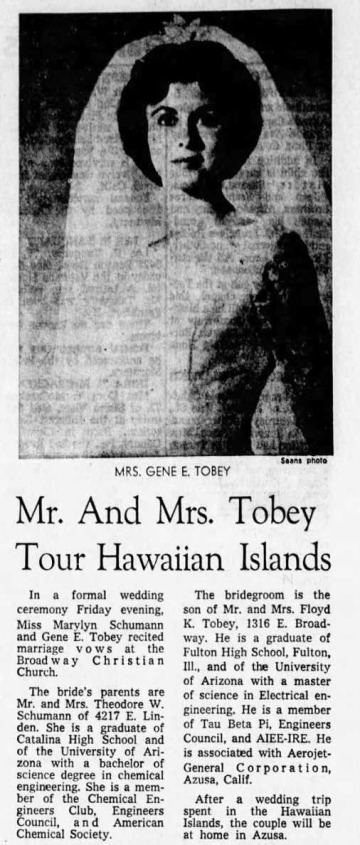
Engineering alumni Gene Tobey and Marylyn Schumann met in Old Engineering, and have now been married for 58 years.
Today, the courtyard and steps of the building known affectionately as Old Engineering are where students do last-minute studying, chat about their Design Day projects, and prepare for events like the Solar Oven Throw Down. Over the last 101 years, the University of Arizona landmark has also been the site of rowdy St. Patrick's Day rituals, wild animal invasions and the beginnings of lifelong love stories.
Old Engineering – officially named Engineering – has been with the college through 14 deans, the growth of majors from five to 15, and the addition of air conditioning. It is home to the departments of biomedical engineering and systems and industrial engineering as well as an academic affairs office. The building, located directly west of the Student Union Memorial Center, was added to the National Register of Historic Places as part of the UA Campus Historic District in 1986 in recognition of the building's contribution to the cultural heritage of Arizona and because of its educational and architectural significance.
Ray Oglethorpe, who recently was inducted into the college's Hall of Fame, remembers sitting in engineering classes and looking out the window across the way at the University's business and administration building.
"We called it the walk of shame," he said. "Whenever people flunked out of engineering, you could see them walk across to the business and administration building."
St. Patrick Was an Engineer?
"He was, he was. For he invented the calculus, and handed it down for us to cuss."
So goes one line of a song ingrained in the history of Old Engineering.
St. Patrick is not just the patron saint of Ireland. Credited with teaching the Irish to build arches of lime mortar instead of dry masonry, he also is the patron saint of engineers. Thus, St. Patrick's Day was quite the affair in the early days of the 133-year-old college. For years, a College of Engineering student dressed as the saint himself led a rollicking parade of shamrock-adorned floats, cars and motorcycles through the center of town.
Old Engineering itself is home to a Blarney Stone, a large green stone mounted in concrete and named after a block embedded in a castle in Ireland. Legend has it that touching lips to the original stone monument endows the kisser with the gift of smooth talking.
Students in the American Association of Engineers, which later became the National Society of Professional Engineers, placed the green stone on a pedestal in front of Old Engineering and gave it its name in 1925, according to "Rah for the Engineers! A Century of Change." The 1986 book by former adjunct professor James P. McCormick details the first 100 years of the college.
Students in the early years circulated all manner of tall tales and rumors about how the stone, which is now a focal point in the Old Engineering courtyard, came to be. In the 1940s, there was one tall tale that the Blarney Stone was the petrified eye of a giant cyclops.
A Site for New Beginnings
Gene Tobey, who earned bachelor's and master's degrees in electrical engineering from the UA, in 1959 and 1961, remembers how the Blarney Stone was once the place where students were welcomed into the college.
"The freshmen being initiated would have to lean over the wall and kiss the stone," said Tobey, who also was inducted into the college's Hall of Fame this year. "You'd wear a green beanie, and you had to learn to sing this engineering song about St. Patrick and how he was an engineer."
Tobey said the initiation was worth it, not only because he went on to a successful career in the aerospace and data industries, but because he met some of the most important people in his life in Old Engineering. In fact, he was working part time in the numerical analysis lab at the rear of the building when a young woman walked in looking for a job.
The woman was chemical engineering student Marylyn Schumann. She got the computer programmer position and later became the first woman to graduate from the UA with a four-year chemical engineering degree. She also became Tobey's wife. The pair have been married for 58 years and have two children and several grandchildren.
"That's what they call a pioneer," said Marylyn Tobey, class of 1961.
A Home for Everyone
Alumnus and professor Larry Head, who just finished his term as interim dean of the College of Engineering, came to the University as an undergraduate in 1979 and joined the faculty after he finished his doctorate in 1989. His home department, systems and industrial engineering, moved into Old Engineering in 1984 while he was still in graduate school, and Head spent that summer relocating partitions from the Civil Engineering building to the new space.
A few decades later, some uninvited guests moved in, too.
On the Tuesday before Thanksgiving break in 2012, one of Head's doctoral students told him he'd been working late the night before when a raccoon had terrified him by dropping out of the ceiling.
"He was a major in the Korean army – a battalion commander," Head said. "It's kind of hard to scare this guy, in my opinion."
Building administrator Mia Schnaible believed it was a "squirrel invasion," recalling that they had stormed Old Engineering before. Meanwhile, Head returned to the building several times a day over the Thanksgiving break to make sure his lab equipment wasn't being damaged by critters. No damage occurred – but he did find some evidence in the form of a trail of paw prints through his office.
An animal capture team did indeed find a ring-tailed cat, a member of the raccoon family known for climbing trees, cacti and the walls of Old Engineering.
A version of this article originally appeared on the College of Engineering website.

